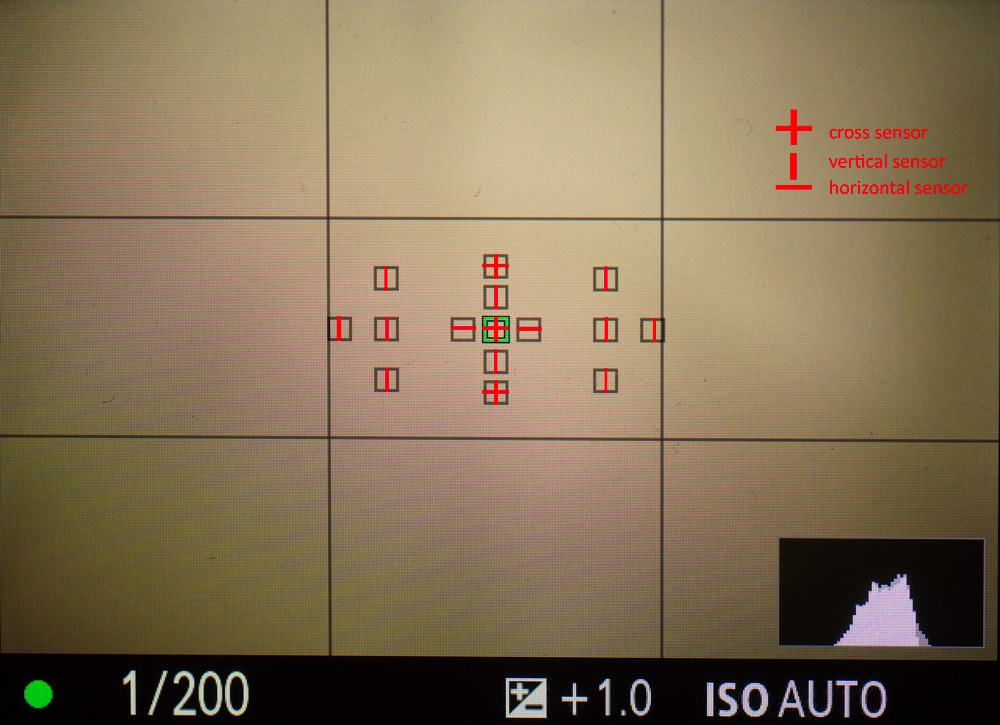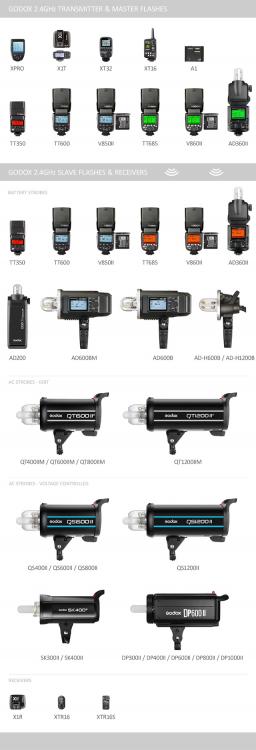-
Posts
779 -
Joined
-
Last visited
Content Type
Profiles
Forums
Articles
Everything posted by Robert Collins
-
Seems to me that a bit of 'camera bashing' is a necessary evil in every camera thread. And it seems that the X-H1 has come through 63 pages of BS pretty much unscathed, so that Fuji is really onto something here, and that this camera is really growing on people.
-
Well apart from his ASAP is April 1st?
-
Its pretty well known that Fuji does a 2/3 stop fudge of its iso to make it look better as illustrated by his exposures. I am a little skeptical though of his claim of a 2 stop difference based on essentially 'Sony' sensors with a one stop difference.
-
The human eye can see at least 20 stops of dynamic range which is why we can easily say view a sunset without the sun blowing out and see more detail in the shadows than a camera can produce. There are different ways of measuring dynamic range - it is not an exact science. So for instance, Sony can claim 15 stops of DR for its A73 and that might well be right by the way they measure it. DXOmark will almost certainly score it at around 14 stops using their method. By Bill Claff's measurements it is 11.6 stops (slightly below the A7R3 at 11.76) http://www.photonstophotos.net/Charts/PDR.htm The Red cameras do score 'extraordinary' high DR results. https://www.dxomark.com/red-helium-8k-dxomark-sensor-score-108-a-new-all-time-high-score2/ They claim 16.5+ stops of DR but DXOmark measures it 15.2 stops (similar to say Sony claiming 15 stops and DXO measuring at 14). What makes this 'extraordinary' is that the RED cameras are not even FF but are outperforming the best FF cameras (which makes no sense.) Clearly Red hasnt magically improved QE of sensors relative to say Sony. DXOmark says they are using 'temporal noise reduction' which is a fancy way of saying they are combining multiple images and processing them for better image quality. As an example you could take your camera and do bracketing -2,0,+2 and combine them in post which would increase the amount of dynamic range you could capture. What Red is effectively doing is equivalent to this but doing the post processing in camera.
-
I am interested in this perhaps you could post a video and show us what you mean. One thing I have noticed with the 'A7riii' is that video is quite a bit smoother when you use a lens with OIS than one without. It is evident here courtesy of 2 videos from 'Cameralabs' First video is with the 85 1.4 GM (no OIS) Second, is with the 24-105 f4 (with OIS) Yes, I know what you are thinking. One is a wide angle, one is telephoto. But I have tried video with both the 85 1.4 (no OIS) and Batis 85 1.8 (with OIS) and the Batis is noticeably better. I also dont think this a 'problem' of the ibis but more a 'feature'. I think the 'ibis' with the non ois lens is trying to keep the image 'steady' or 'fixed' which would be perfect for stills but makes it jerky for video. At some point manufacturers will need different ibis for stills and video (doesnt the Fuji X-H1 already have this?) The way Sony cameras are designed they automatically fix/fudge this issue over time. Once a month the camera does pixel remapping which interpolates dead pixels (ever notice a 'thud' from an A7 camera a second or so after you switch it off?) That is why the date fix works - moving forward the date by at least a month tells the camera it is time for pixel remapping. BTW, every CMOS sensor has dead or hot pixels - so anyone claiming that my x camera never had a dead pixel is simply stating that they havent seen one rather than they exist and have been remapped. I thought that Sony QC limited dead pixels to 1:10,000 or .01%. Doesnt sound too bad but it does equate to 2,400 pixels on a 24mp camera. So I find it difficult to get excited about 40 dead pixels.
-
Well inherently pixel interpolation is a 'fudge' more than a 'fix' but camera companies are pretty good at it..... I would also imagine that if there were a significant number of bad pixels, you could have the camera/sensor replaced under warranty.
-
Yes, the same with the Olympus EM1 I had - there was a 'menu item' for 'pixel remapping'. Sony obviously thought they already had enough menu items, so they would make it even more complicated....
-
Actually this is a pretty old fix for dead/faulty pixels on a Sony sensor. Basically any sensor will have a number of bad/dead pixels. I believe that QC limits the number to 1:10,000 (or something like that.) What the camera does when it sees a dead pixel is interpolate it. What happens if you set the date well ahead of the actual date is that the camera searches for dead pixels and then remaps the sensor for any new dead pixels by interpolating any dead pixels it finds.
-
I dont really get the 'smart marketing' from Canon. It more strikes me as a company that is dependent on 'brand loyalty' for sales not realizing that brand loyalty is a two way street. From a marketing perspective Canon just seems to be a company with a 'lot of potential' that 'simply isnt making an effort'. That maybe not true but it is the impression Canon gives. At the opposite end of the scale, Sony's marketing 'perspective' seems to be around 'trying ' to give as much 'value' for as 'low a price' as possible.
-
I still struggle with the concept of large (and quite expensive) cameras with small sensors then offering fairly expensive adapters (speedboosters) to emulate FF. Why not simply buy a FF camera in the first place. If a smaller sensor camera doesnt offer an advantage in terms of 'size' (actually being smaller) or 'price' what exactly is the point? Admittedly it does make some sense for Panasonic in video as they offer 10bit, high bit rates and 4k 60p which the FF companies havent really shown is possible in FF but I do think it is only a matter of time. The industry, I think, is trending to FF.
-

Sony A7R3 users - THROW AWAY YOUR CANON LENSES!
Robert Collins replied to Andrew - EOSHD's topic in Cameras
Yes I bought a Sony A mount 135 f1.8 and the Laea 4 adapter (the one with the translucent focus mirror.) There are 2 problems... 1) Because you have a mirror you have to make micro af adjustments for the lens rather like with a DSLR. I found this an incredible pain (never having owned a DSLR) and simply could not get my photos critically sharp - was it the lens? was it the af adjustment? So I didnt use it much and then sold it. 2) The af points are clustered in the center of the frame... ...its usable of course but is well short of an A7x experience. In fact the whole af experience feels 5 years old. -
No I 100% agree. At the point that noone can think of a sensible reason to have a mirror in front of a sensor, they will simply state the unassailable fact that a mirror in front of a sensor is incredibly useful because it will prevent 'dust'.
-
I am 100% confident that putting 'something' in front of a sensor to prevent dust is better than not having 'anything' in front of a sensor to prevent dust. I do however agree, that if you consider the major advantage of having a 'mirror' is that it prevents 'dust' you are really stretching the argument for having a mirror in the first place...
-
Yes, I agree. And very few people mention that the 5D4 also has a mirror which protects you from dust when you change lenses...
-
Sensible stuff I guess. But, personally, I dont think a lot will change. Yes the Sony bodies (especially the A7iii) look great value when compared to their nearest competitors. But you still get bitten by the lenses one way or another - either expensive native lenses or adapters/reduced performance. I suspect the 6Dii and 5D mkiv prices will come down but that is because noone will buy them if they dont rather than they will switch to Sony.
-

The "Annihilation" of Paramount Pictures
Robert Collins replied to Andrew - EOSHD's topic in Cameras
BTW Cinemascore scored this a 'C' (based on audience reaction on the opening weekend) which is pretty terrible (the worst of all the recent cinema releases.) So it appears to be a dud and that Paramount was 'right' to bin it off to Netflix for its international release. -

The "Annihilation" of Paramount Pictures
Robert Collins replied to Andrew - EOSHD's topic in Cameras
I actually liked the casting in the movie. I generally dont like women actors in action movies but it really worked here for me. And I think you misunderstood the ending. SPOILER ALERT. We can be pretty sure that Kane (Cain, first son of Adam and Eve) is not the real Kane (in fact we see it in the movie). We can also be pretty sure that at the end of the movie, Lena is not the real Lena but her doppelganger. We can see that in the 'inverted' view of her seen in the glass of water at the end. And rather more obviously in her 'glowing eyes' at the end. -

Are we going to talk about Netflix's "Bright"?
Robert Collins replied to Damphousse's topic in Cameras
I took a look at 'Bright' (which I had never heard of) mostly because of this thread. In the UK we have an expression - a marmite film - meaning that you are going to either really 'love' it or 'hate' it and I do like watching marmite films. But Bright, I stopped watching after 20 minutes. It almost certainly isnt the worst film of the year but it was pretty terrible. According to Cinemascore the worst film of 2017 was 'Mother'. It received an 'F' - the lowest score you can get and the first film to receive an 'F' since 2012. Mother is definitely a marmite film - I loved it. -
I understand the point you are making but I still think it amounts to a 'glass half empty' argument rather than a 'glass half full'. On the other side, what Fuji has done (that would be important to me' is 1. introduce ibis (which has always been a dealbreaker for me with Fuji) and 2. higher bitrate video than its competitors (generally speaking). I think that when both Sony and Fuji are bringing so much to the party we should probably celebrate this rather than focus on the weaknesses. We are not talking Canon, Nikon and Olympus here because their relative deficiencies are rather more obvious.
-
Still, honestly speaking, I think this whole Sony/Fuji feud is pretty silly. Reading this thread you would think that both companies had just introduced virtually unusable cameras when, in fact, both companies are pushing the boundaries of features for a hybrid and especially the features at the given price point. 6 months ago, few would have imagined we would get these hybrids at this price point.
-

The "Annihilation" of Paramount Pictures
Robert Collins replied to Andrew - EOSHD's topic in Cameras
I bet you are fun at parties. Are we seriously suppose to judge science fiction films based on whether they are realistic or not? In 'Annihilation' Elena says about the concept that the 'shimmer' is refracting all elements and not just light - that it is 'literally impossible' - is she actually complaining about the script? -

The "Annihilation" of Paramount Pictures
Robert Collins replied to Andrew - EOSHD's topic in Cameras
I liked the movie a lot. A story line with many themes going through it. It was beautifully shot in parts but I did feel that certain moments jarred during the film. It was a fairly ambitious movie though - I think it will age well... -
Yes it does look very much like Panasonic's CDAF based video focusing. I have never experienced the same with my A7r3 - sure it misses focus but it doesnt shimmer. Incidentally, were you recording proxies with the 4K?
-
Yes, that is true. But part of the attraction of FF is that you dont have to use 'really fast lenses' to get good low light performance or limited DOF. Lenses such as the Sony FE 28 f2, 50 1.8, 85 1.8, the Rockinon 35 2.8 or 14 2.8 are not particular large or expensive (US$200-US$700 ea). The same could just about be said of the F4 zooms.
-
I dont really see flash support as much of an issue for MILCs. Godox has the largest range of flashes of any manufacturer with power from 35w speedlights all the way up to 1200w. Cordless/li-on battery speedlights even batteries cross compatible with their LEDs. They offer TTL/HSS across the board for M43, Fuji and Sony as well as Nikon and Canon. Their prices are pretty friendly too.






